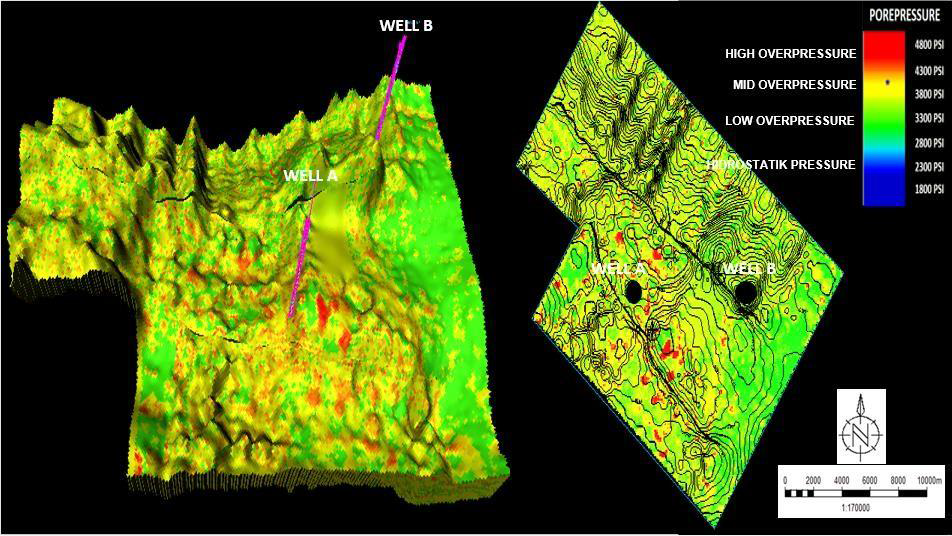Pore Pressure Estimation Using Bowers Methods in Shale Gas Reservoir Jambi Sub-Basin
DOI:
https://doi.org/10.31957/jfp.v1i2.13Keywords:
Pore Pressure, Bowers MethodsAbstract
Pore pressure prediction has important implications in determining the success of a drilling activity. Information of subsurface pore pressure prediction in hydrocarbon exploration and production is very important. For geologist this information can be used to determine of hydrocarbon generation and maturation within a basin, while for petroleum engineer pore pressure prediction is very important to maintain the production rate and for drilling engineer this information is useful for mud weigh and casing designs prior drilling activities to prevent blow out. This study is conducted in the well A and B, Field "X", Jambi Sub-Basin. Wells A and B have problems when drilling operations are carried out, such as blow out and pipe sticking which causes high non-productive time (NPT). So, optimum pore pressure prediction analysis must be carried out to avoid downhole problems in the implementation of further development well drilling. First, this study identifies the mechanism of overpressure formation, then predicts pore pressure using the Bowers method and subsequently performs modeling of subsurface 3D pore pressure. The results of the analysis showed that overpressure occurred in the Gumai and Talang Akar Formations, overpressure mechanism in the formation was caused by compaction, fluid expansion (kerogen maturation), and based on analysis of 3D pore pressure modeling many overpressure zones were found in the Gumai Formation, Jambi Sub-Basin
References
EIA, 2013: Energy Information Administration., International Energy Outlook.
Budiman, Muhammad Arif, Warnana, Dwa Desa, Syaifuddin, Firman, 2017 Kajian dan Komparasi Teoritis Metode Prediksi Tekanan Pori: Metode Eaton dan Metode Bowers, Jurnal Teknik ITS, Vol. 6, No. 2.
D. Ginger, K. Fielding, 2005 The Petroleum Systems and Future Potential of The South Sumatra Basin, Proceedings, Indonesian Petroleum Association, Thirtieth Annual Convention & Exhibition.
Dutta, N.C, 2002, Geopressure Prediction Using Seismic Data : Current Status and The Road Ahead, GEOPHYSICS, 67, 2012-2041.
R.E. Swabrick, M.J. Osborne, & G.S Yardley, 2002 Comparasion of overpressure magnitude resulting from the main generating mechanisms. AAPG, Tulsa, Memoir 76, 1-12.
M.J Hoesni., 2004 Origins of overpressure in the Malay Basin and its influence on petroleum systems: Ph.D. thesis, University of Durham, Durham, England.
Bowers, G.L., 1995 Pore pressure estimation from velocity data: Accounting for overpressure mechanisms besides under compaction, SPE Drilling & Completion June.
Sukmono, S., 2000 Seismik Inversi untuk Karakterisasi Reservoir, Jurusan Teknik Geofisika, ITB, Bandung, Indonesia.

Downloads
Published
Issue
Section
License
Copyright (c) 2022 Authors retain copyright and grant the journal right of first publication with the work simultaneously licensed under a Creative Commons Attribution 4.0 International License (CC-BY) that allows others to share the work with an acknowledgement of the work's authorship and initial publication in this journal.

This work is licensed under a Creative Commons Attribution 4.0 International License.




